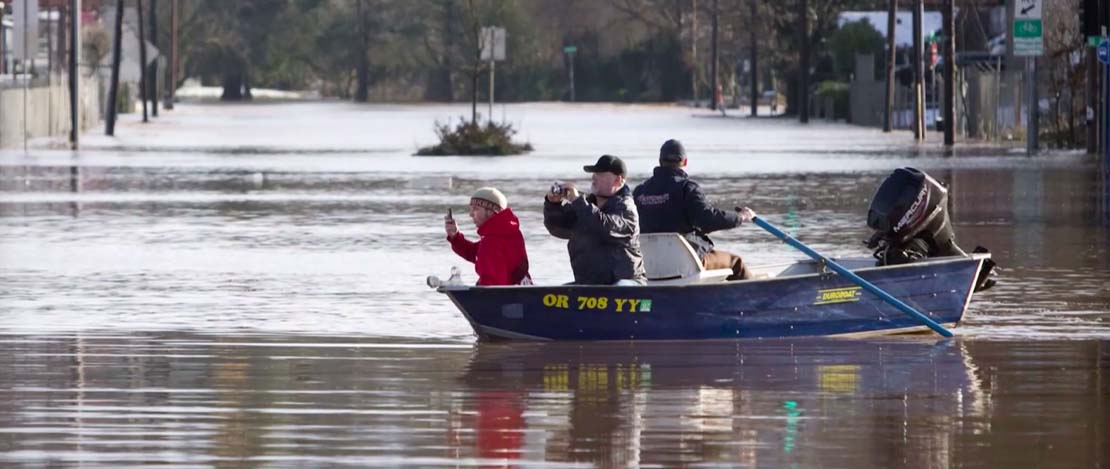
Rising to Challenges
The Great Flood (of 2016)

Most Oregonians remember the epic flood of 1996, which displaced 3,000 residents from their homes and caused $500 million in property damage.
But there’s another flood that happened 20 years later, and though it’s not as well known, staff members at The Portland Clinic will never forget it. The “Great Flood of 2016” affected only one building in Portland: the clinic’s central downtown office.
Branch manager Susan Bitz woke up that Monday to an urgent, early-morning call from the clinic’s maintenance department. Rushing to the building, she couldn’t believe what she found: a top-floor water line had broken over the weekend, sending water cascading down all four floors of the building.

We might not always face challenges like having water and ceiling tiles falling on us, but health care these days is challenging. And if we can survive and come out even better after something like that, we can accomplish a lot together.
“It was raining in the clinic,” she remembers. “We were walking through puddles everywhere, and the first thing I thought was, we have 300 patients scheduled today.”
And it wasn’t just that day. The clinic had 300 patients scheduled every day. “It was surreal,” said chief executive officer Dick Clark, “to walk through the water and see about half of the building knocked out of commission, and to realize that we still needed to serve our patients.”
Donning hard hats and converting an undamaged conference room into flood-recovery headquarters, Bitz and the clinic leadership called every member of the downtown staff and mobilized the team to make sure patients would get the care they needed.
Patients, however, were only half of the equation. With professional clean-up and construction contractors deployed throughout the building to replace floors, walls and ceilings, the medical staff needed to be re-deployed elsewhere. Re-routing doctors, nurses and medical assistants — as well as their patients — to other branch locations had the staff jumping and in constant communication.
Another big challenge, recalls Bitz, was dealing with the countless boxes of medical records, some from the offices of doctors who’d been in practice for 30 years. “On a positive note,” she laughs, “we did purge a lot of old stuff!”
Through a herculean, full-team effort, it took just over a month to return every department, including 30 different medical specialties, to good health and full operation.
The quick restoration — and in some ways, improvement — of the office came as no surprise to Clark. “I knew what we were capable of,” he says. “We might not always face challenges like having water and ceiling tiles falling on us, but health care these days is challenging. And if we can survive and come out even better after something like that, we can accomplish a lot together.”
And so they have. The autumn flood was followed by one of Portland’s heaviest-ever snowfalls, with accumulations deep enough to shut down the main branch’s parking lot. Once again, a team of staff members set to work, clearing the way for patients. Doctors, medical assistants and administrators brought their own shovels to work and spent the better part of a day shoveling out the lot. “We started with a couple of maintenance guys in the morning, and the party just grew,” says Bitz. “You just pitch in and do what you have to do.”